
Did you know that 90% of people believe building electronics is too complex for them?
However, with the right guidance and resources, anyone can learn how to build their own electronic projects from scratch.
In this article, we will provide a step-by-step guide for absolute beginners on how to build electronics, starting from simple projects and progressing to using starter kits.
We will cover everything from understanding basic components to troubleshooting common issues.
So let's dive in and unlock the world of electronics DIY!
Key Takeaways
- Understanding basic electronic components and circuit design is essential for building electronics.
- Proper connections and troubleshooting techniques are crucial for reliable performance.
- Having essential tools and budget-friendly options is important for beginners.
- Safety equipment, such as safety goggles and ESD wrist straps, should be used to protect against hazards.
Understanding Basic Electronic Components
To begin building electronics, it is crucial to have a comprehensive understanding of basic electronic components and their functions in circuits. These components serve as the building blocks for any electronic system, enabling the flow of electricity and the creation of desired effects.
Resistors, for example, are used to limit current flow, while capacitors store electrical energy. Diodes allow current to flow in only one direction, while transistors amplify or switch electronic signals. Integrated circuits (ICs) contain multiple components on a single chip, providing complex functionalities in a compact form factor.

Understanding how these components work individually and how they interact with each other is essential when designing and troubleshooting circuits.
With this foundational knowledge in place, we can now move on to exploring simple circuit design and putting our understanding into practice.
Exploring Simple Circuit Design
Exploring simple circuit design involves understanding the fundamentals of circuitry, components, and their connections.
This process requires a technical and precise approach to ensure the functionality and efficiency of the circuit.
Additionally, troubleshooting common issues is crucial for maintaining optimal performance in electronic systems.
Basics of Circuit Design
Understanding the fundamentals of circuit design is crucial for beginners looking to build their own electronics. To successfully design circuits, it is important to grasp the following concepts:
- Voltage: The electrical potential difference that drives current flow in a circuit.
- Current: The rate at which electric charge flows through a conductor.
- Resistance: The property of a material that opposes the flow of current.
- Ohm's Law: A fundamental relationship between voltage, current, and resistance.
To design circuits effectively, beginners must familiarize themselves with these principles. By understanding how voltage, current, and resistance interact, they can create circuits that function as intended. This knowledge allows for greater freedom in building electronics and enables beginners to explore more complex projects confidently.
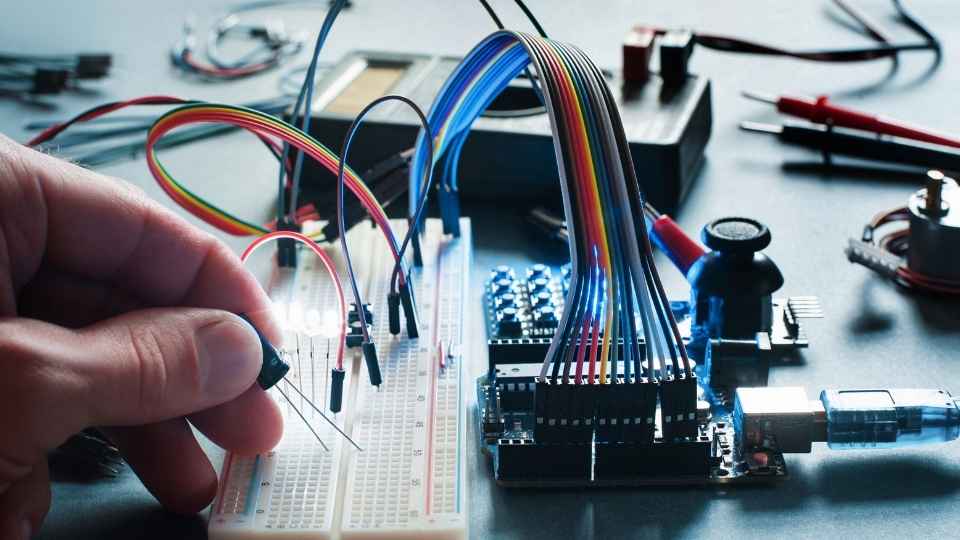
With the basics of circuit design mastered, newcomers can embark on their journey towards becoming skilled electronic builders.
Components and Connections
Components and connections are essential aspects of circuit design that must be carefully considered to ensure proper functionality and reliability. Each component plays a specific role in the overall operation of the circuit, and understanding their characteristics is crucial for selecting the right components for a project.
Resistors, capacitors, inductors, diodes, transistors, and integrated circuits are some common components used in electronic circuits. Each component has unique electrical properties that affect how it interacts with other components within the circuit.
Connections between components are equally important as they determine the flow of current and signals throughout the circuit. Properly connecting components using techniques such as soldering or breadboarding ensures reliable performance.
It is imperative to follow established standards and guidelines when designing circuits to guarantee safe operation while allowing freedom for creativity and innovation in electronics projects.
Troubleshooting Common Issues
To effectively troubleshoot common issues in circuit design, it is important to carefully analyze the connections between components and identify any potential sources of malfunction. This requires a systematic approach and attention to detail. Here are some key steps to follow when troubleshooting circuit designs:
Inspect the physical connections: Check for loose or incorrect connections, damaged wires, or faulty solder joints. Ensure that all components are properly seated.
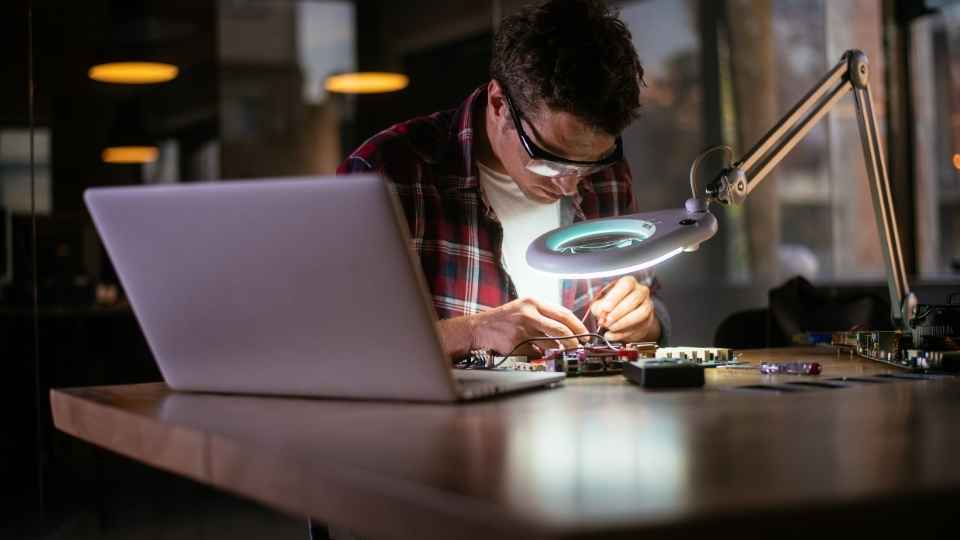
Test individual components: Use multimeters or other testing equipment to verify the functionality of each component. Look for signs of damage or failure.
Trace signal paths: Follow the flow of signals through the circuit using schematic diagrams or PCB layouts. Identify any areas where signals may be getting lost, distorted, or shorted.
Use diagnostic tools: Utilize tools like oscilloscopes and logic analyzers to monitor signals in real-time and identify anomalies or irregularities.
When working on electronics DIY projects, it is crucial to have the right tools at hand to ensure accurate and efficient work.
These tools range from basic necessities like wire cutters, soldering irons, and multimeters to more advanced equipment such as oscilloscopes and logic analyzers.
Investing in quality tools will not only enhance the overall experience but also contribute to achieving professional-level results.
Essential tools for beginners in electronics include a soldering iron, wire cutters, and a multimeter. These tools are crucial for any DIY project as they provide the necessary precision and accuracy required to successfully build electronic circuits.
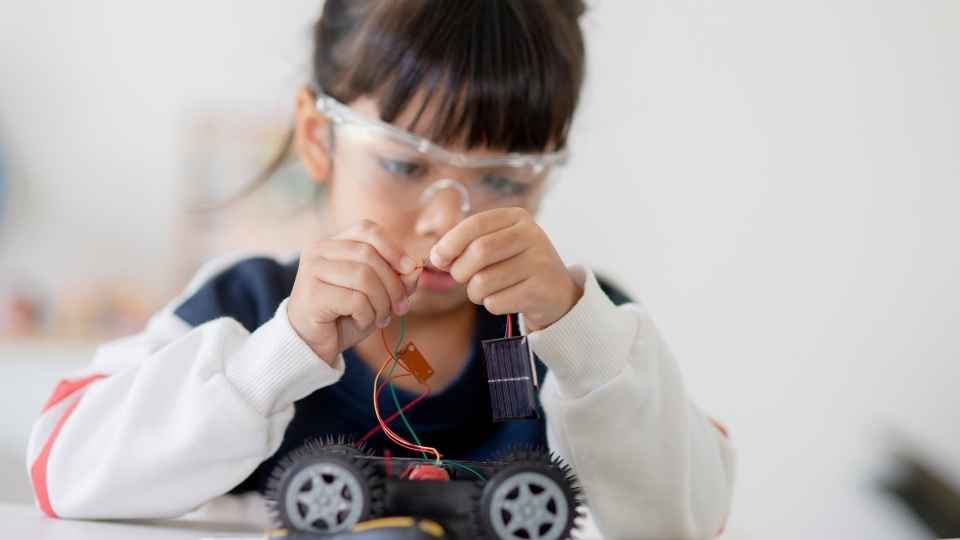
In addition to these basic tools, there are several other must-have tools that can enhance your electronics journey:
Breadboard: A breadboard allows you to prototype circuits without the need for soldering. It provides an easy way to experiment and make changes on the fly.
Wire Strippers: Wire strippers are essential for removing insulation from wires without damaging them. They ensure clean connections and prevent short circuits.
Needle-nose pliers: These pliers come in handy when working with small components or bending wires into shape.
Desoldering pump: This tool helps you remove excess solder from circuit boards or components, allowing for easier repairs or modifications.
Now that we have covered the must-have tools for beginners in electronics, let's explore some budget-friendly tool options.
For those who desire freedom in their projects without breaking the bank, there are several affordable tools available in the market. One option is to look for tool kits specifically designed for beginners, as they often offer a variety of essential tools at a lower cost. Another option is to purchase individual tools from reputable brands known for their quality and affordability.

When selecting budget-friendly tools, it is important to consider durability and functionality. While these options may not have all the advanced features found in more expensive counterparts, they can still provide adequate performance for basic projects. Additionally, keep an eye out for deals and discounts online or at local electronics stores to further reduce costs.
Transitioning into the next section on essential safety equipment needed...
Essential Safety Equipment Needed
To ensure a safe and secure working environment, it is crucial to have the necessary safety equipment in place. When working with electronics, there are several essential items that should be used to protect yourself and the equipment. These include:
Safety goggles: Protect your eyes from potential hazards such as sparks or flying debris.
ESD wrist strap: Prevent electrostatic discharge that could damage sensitive electronic components.
Fire extinguisher: Be prepared for any accidental fires that may occur during soldering or other activities involving heat.
First aid kit: Have access to basic medical supplies in case of minor injuries.
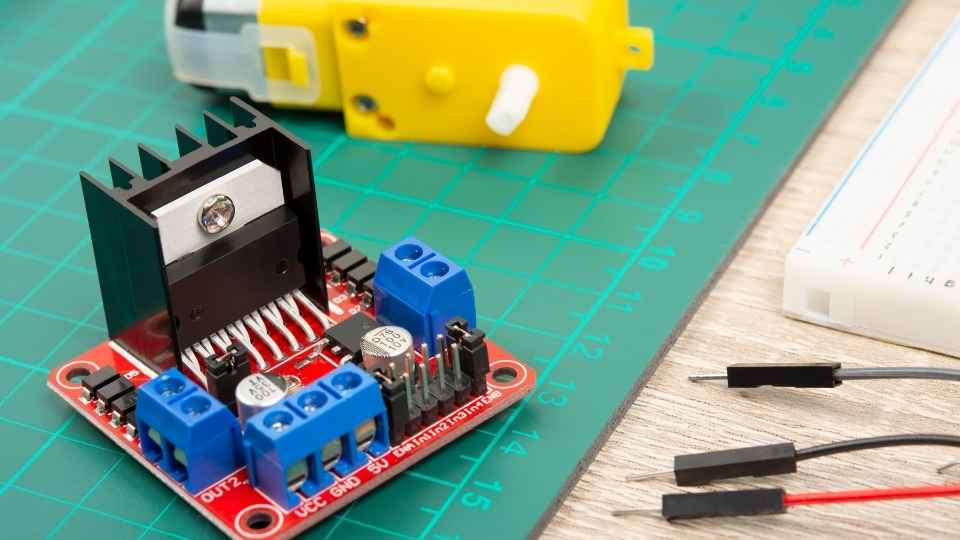
By having these items readily available, you can minimize the risk of accidents and create a workspace where you can confidently pursue your electronics projects.
Step-by-Step Guide to Building Your First Project
First, familiarize yourself with the components you will need for your first electronics project. To build a basic circuit, you will require a breadboard, resistors, capacitors, LEDs, jumper wires, and a power source such as batteries or an AC/DC adapter. Additionally, you may need tools like pliers, wire cutters/strippers, and a soldering iron if your project involves soldering. It is crucial to understand the purpose of each component and how they connect in a circuit. Follow detailed schematics or circuit diagrams to ensure accuracy.
Once you have gathered the necessary components and tools for your project, it's time to start building. Begin by placing the components on the breadboard according to the schematic diagram. Make sure all connections are secure and no loose wires are present. Test your circuit by applying power and observing its functionality.
With this understanding of building circuits from scratch, let's now move on to choosing the right starter kit for beginners...
Choosing the Right Starter Kit for Beginners
When selecting a kit for novice users, it is important to consider factors such as complexity, available resources, and the level of support provided.
Complexity: Choose a starter kit that offers projects with varying levels of difficulty, allowing beginners to start with simpler projects and gradually progress to more complex ones.
Available Resources: Ensure that the kit includes all the necessary components and materials needed for each project. It should also provide comprehensive documentation, tutorials, and online resources to aid in the learning process.
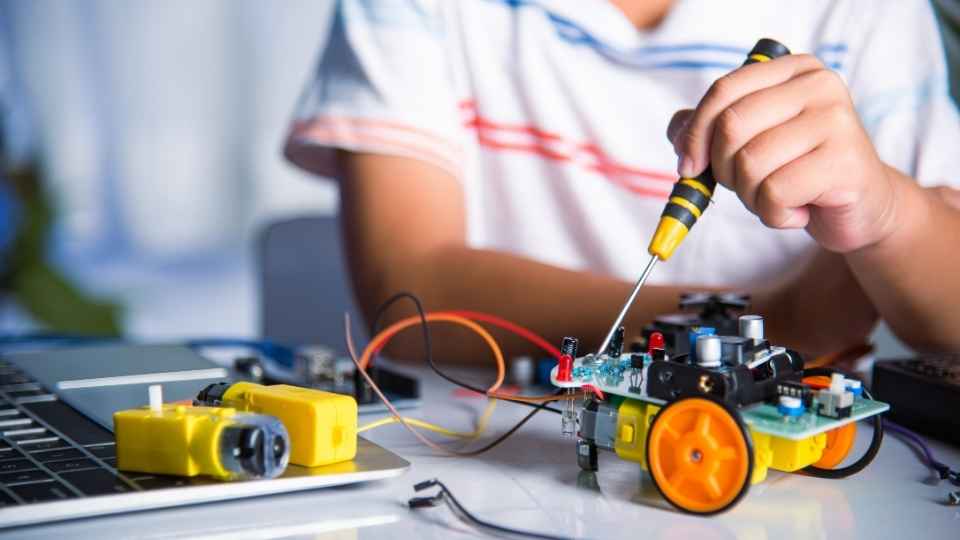
Level of Support: Look for a kit that offers robust customer support through forums or email. This ensures that any questions or issues can be addressed promptly by experienced individuals.
Freedom: Opt for a kit that encourages experimentation and customization. A good starter kit will empower beginners to explore their creativity while building electronics.
Troubleshooting Tips for Common Electronics Issues
When working with electronics, it is common to encounter issues that require troubleshooting. Some common problems include faulty connections, incorrect wiring, and component failures. To address these issues, it is important to have a systematic approach.
Firstly, check for loose connections or damaged wires. Ensure that all components are properly connected and securely fastened. Next, verify the correctness of your circuit design and double-check the wiring against the schematic diagram provided. If everything seems correct, examine individual components for signs of damage or failure.
In some cases, troubleshooting may require advanced tools such as multimeters or oscilloscopes to measure voltage levels and waveforms. These tools can help pinpoint the source of the problem more accurately.
Taking Your Skills to the Next Level: Advanced Projects for Beginners
To expand your proficiency in electronics, it is recommended to undertake more challenging endeavors that push the boundaries of your knowledge and skills. Here are some advanced projects for beginners that will help you take your skills to the next level:
Build a digital thermometer: This project involves using sensors to measure temperature and displaying the results on an LCD screen. It will enhance your understanding of analog-to-digital conversion and programming microcontrollers.

Design a wireless home automation system: Create a system that allows you to control lights, appliances, and security devices wirelessly using Bluetooth or Wi-Fi. This project will involve learning about wireless communication protocols and integrating different components.
Construct a robotic arm: Building a robotic arm requires knowledge of servo motors, kinematics, and programming. It will give you hands-on experience with mechanical design and control systems.
Develop a weather station: Combine sensors for measuring temperature, humidity, pressure, wind speed, and rainfall to create a weather station. This project will help you learn about data acquisition, sensor calibration, and data visualization.
Undertaking these advanced projects will not only enhance your technical skills but also give you the freedom to explore new possibilities in the field of electronics.
Frequently Asked Questions
What Are Some Common Safety Precautions That Beginners Should Keep in Mind While Working With Electronics?
When working with electronics, beginners should prioritize safety by following some common precautions. These include disconnecting power sources, using insulated tools, avoiding water contact, wearing protective gear, and understanding basic circuitry principles to prevent accidents or damage.
How Can I Identify and Read the Values of Resistors, Capacitors, and Other Electronic Components?
To identify and read the values of resistors, capacitors, and other electronic components, beginners should refer to the component's markings or datasheets. These provide information such as resistance, capacitance, tolerance, and voltage ratings necessary for proper circuit design and troubleshooting.
What Are Some Common Mistakes Beginners Make When Designing Simple Circuits, and How Can I Avoid Them?
Some common mistakes that beginners make when designing simple circuits include incorrect component placement, improper soldering techniques, and inadequate understanding of circuit theory. To avoid these errors, it is crucial to carefully follow guidelines and seek guidance from experienced individuals or resources.
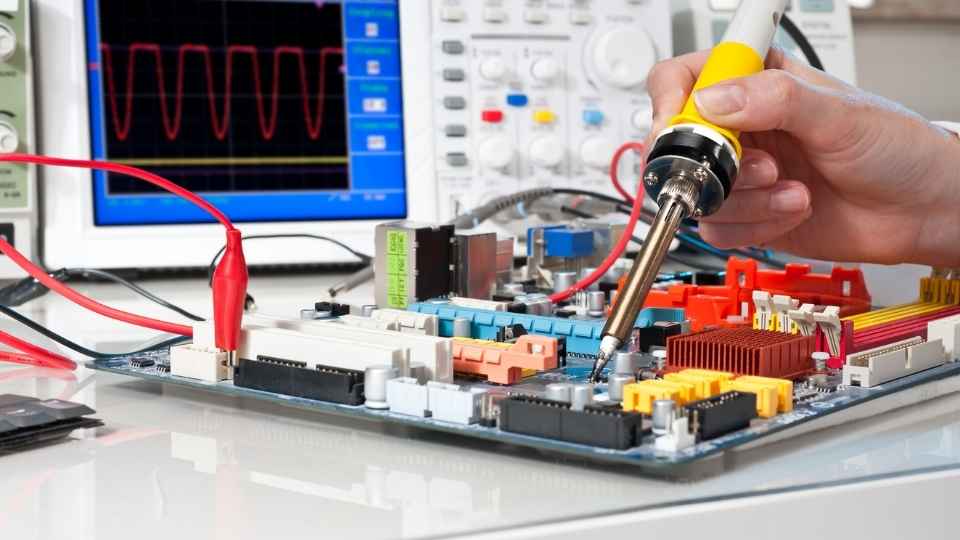
When starting out in electronics DIY, it is recommended to invest in reliable brands such as Fluke, Hakko, and Weller for tools like multimeters and soldering irons. These brands offer quality and precision for beginners.
How Do I Determine the Appropriate Power Supply for My Electronic Project, and What Considerations Should I Keep in Mind When Working With Different Voltage Levels?
When determining the appropriate power supply for an electronic project, it is crucial to consider the voltage requirements of each component. Factors such as current consumption, maximum voltage ratings, and compatibility with different voltage levels should be taken into account to ensure safe and efficient operation.
 Basic Electronics ConceptsEssential ToolsCircuit Design BasicsMicrocontrollersDIY Electronics ProjectsRoboticsPrivacy PolicyTerms And Conditions
Basic Electronics ConceptsEssential ToolsCircuit Design BasicsMicrocontrollersDIY Electronics ProjectsRoboticsPrivacy PolicyTerms And Conditions
